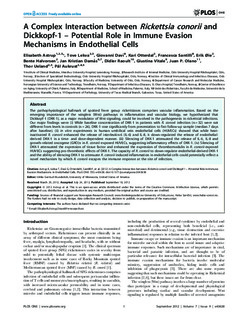| dc.contributor.author | Astrup, Elisabeth | |
| dc.contributor.author | Lekva, Tove | |
| dc.contributor.author | Davi, Giovanni | |
| dc.contributor.author | Otterdal, Kari | |
| dc.contributor.author | Santilli, Francesca | |
| dc.contributor.author | Øie, Erik | |
| dc.contributor.author | Halvorsen, Bente | |
| dc.contributor.author | Damås, Jan Kristian | |
| dc.contributor.author | Raoult, Didier | |
| dc.contributor.author | Vitale, Giustina | |
| dc.contributor.author | Olano, Juan P | |
| dc.contributor.author | Ueland, Thor | |
| dc.contributor.author | Aukrust, Pål | |
| dc.date.accessioned | 2015-11-10T12:51:24Z | |
| dc.date.accessioned | 2015-11-24T10:09:36Z | |
| dc.date.available | 2015-11-10T12:51:24Z | |
| dc.date.available | 2015-11-24T10:09:36Z | |
| dc.date.issued | 2012 | |
| dc.identifier.citation | PLoS ONE 2012, 7(9) | nb_NO |
| dc.identifier.issn | 1932-6203 | |
| dc.identifier.uri | http://hdl.handle.net/11250/2365403 | |
| dc.description.abstract | The pathophysiological hallmark of spotted fever group rickettsioses comprises vascular inflammation. Based on the
emerging importance of the wingless (Wnt) pathways in inflammation and vascular biology, we hypothesized that
Dickkopf-1 (DKK-1), as a major modulator of Wnt signaling, could be involved in the pathogenesis in rickettsial infections.
Our major findings were: (i) While baseline concentration of DKK-1 in patients with R. conorii infection (n = 32) were not
different from levels in controls (n = 24), DKK-1 rose significantly from presentation to first follow-up sample (median 7 days
after baseline). (ii) In vitro experiments in human umbilical vein endothelial cells (HUVECs) showed that while heatinactivated
R. conorii enhanced the release of interleukin-6 (IL-6) and IL-8, it down-regulated the release of endothelialderived
DKK-1 in a time- and dose-dependent manner. (iii) Silencing of DKK-1 attenuated the release of IL-6, IL-8 and
growth-related oncogene (GRO)a in R. conorii-exposed HUVECs, suggesting inflammatory effects of DKK-1. (iv) Silencing of
DKK-1 attenuated the expression of tissue factor and enhanced the expression of thrombomodulin in R. conorii-exposed
HUVECs suggesting pro-thrombotic effects of DKK-1. The capacity of R. conorii to down-regulate endothelial-derived DKK-1
and the ability of silencing DKK-1 to attenuate R. conorii-induced inflammation in endothelial cells could potentially reflect a
novel mechanism by which R. conorii escapes the immune response at the site of infection. | nb_NO |
| dc.language.iso | eng | nb_NO |
| dc.publisher | Public Library of Science | nb_NO |
| dc.title | A Complex Interaction between Rickettsia conorii and Dickkopf-1 - Potential Role in Immune Evasion Mechanisms in Endothelial Cells | nb_NO |
| dc.type | Journal article | nb_NO |
| dc.type | Peer reviewed | en_GB |
| dc.date.updated | 2015-11-10T12:51:24Z | |
| dc.source.volume | 7 | nb_NO |
| dc.source.journal | PLoS ONE | nb_NO |
| dc.source.issue | 2 | nb_NO |
| dc.identifier.doi | 10.1371/journal.pone.0043638 | |
| dc.identifier.cristin | 990087 | |
| dc.description.localcode | © 2012 Antonov et al. This is an open-access article distributed under the terms of the Creative Commons Attribution License, which permits unrestricted use, distribution, and reproduction in any medium, provided the original author and source are credited. | nb_NO |
